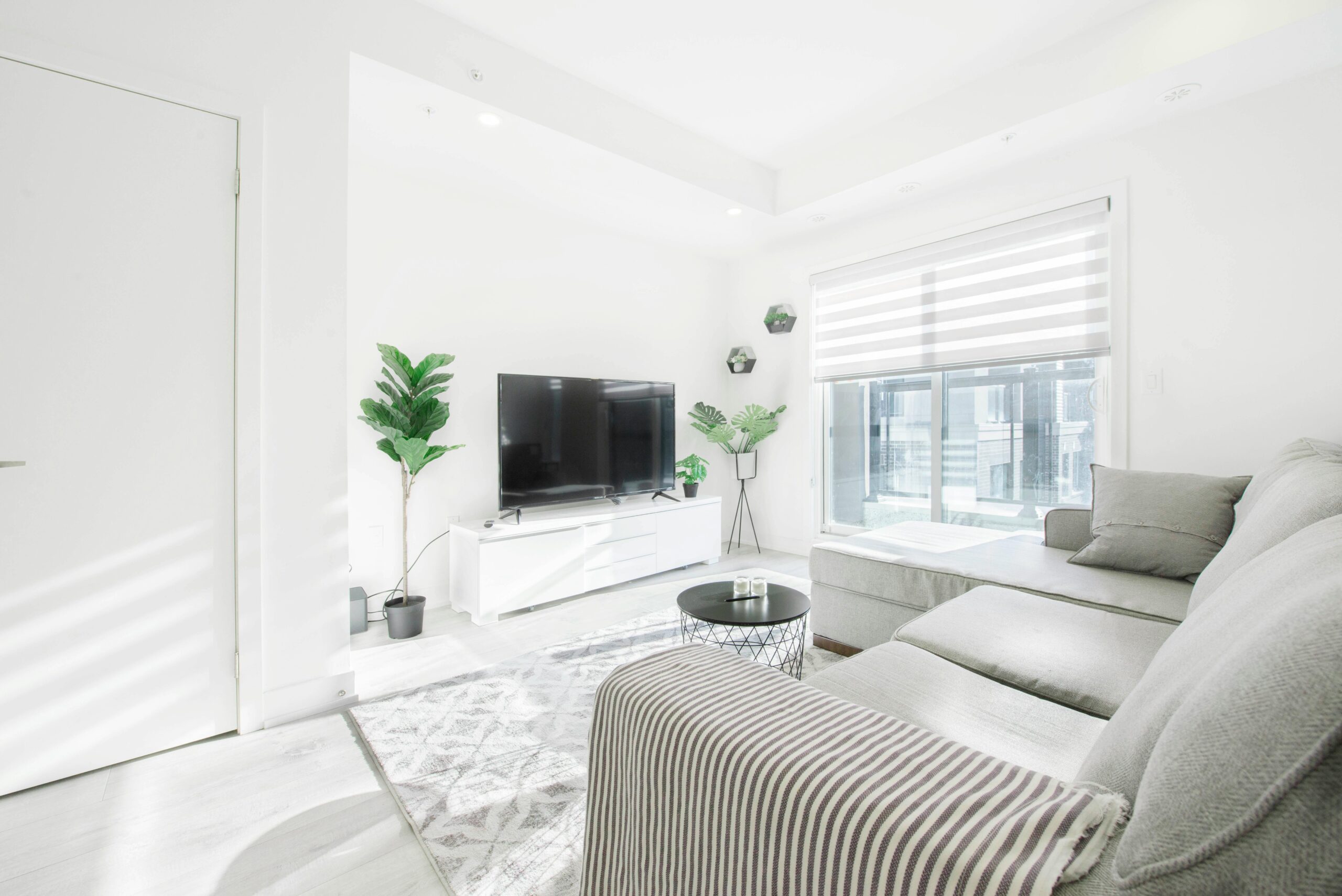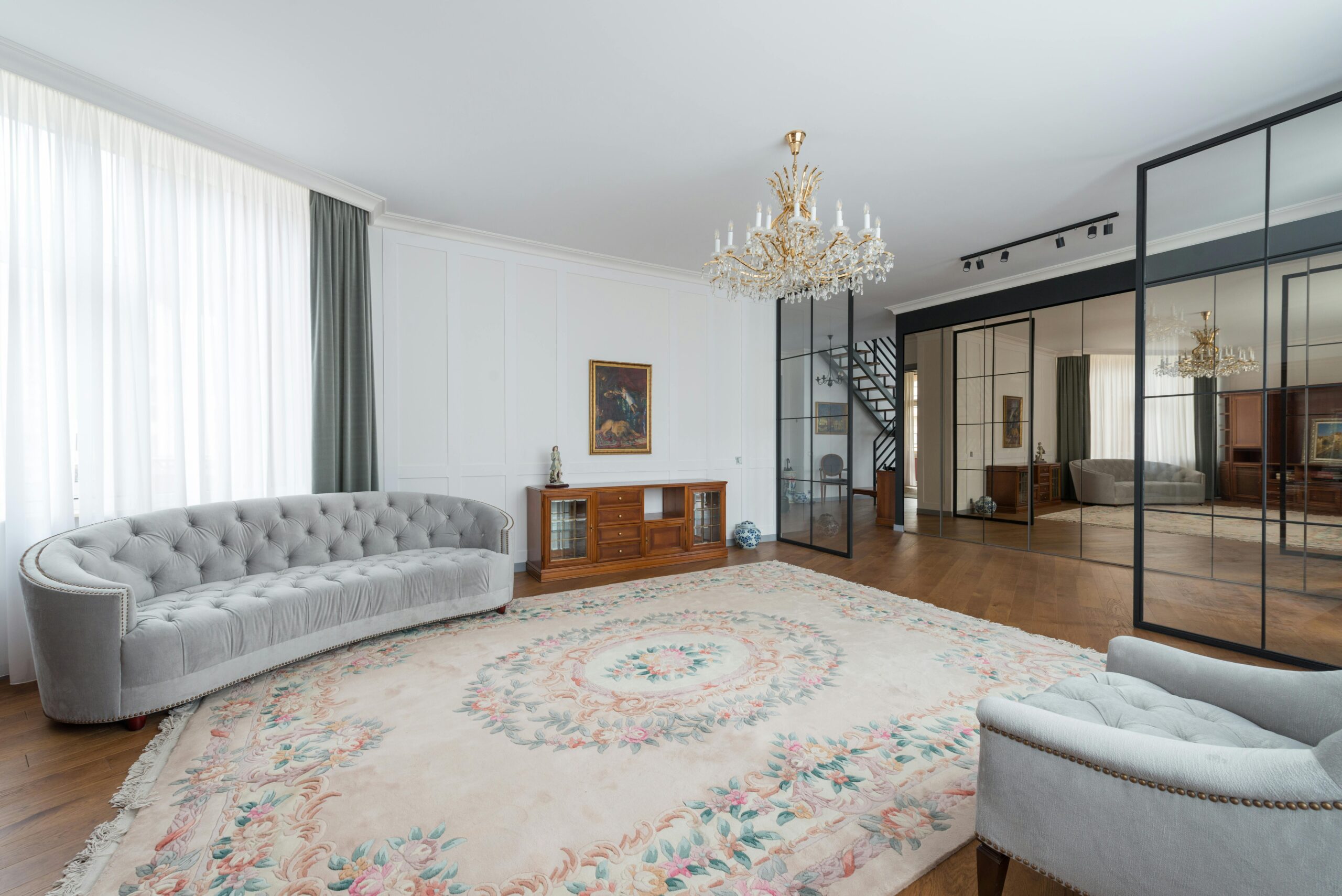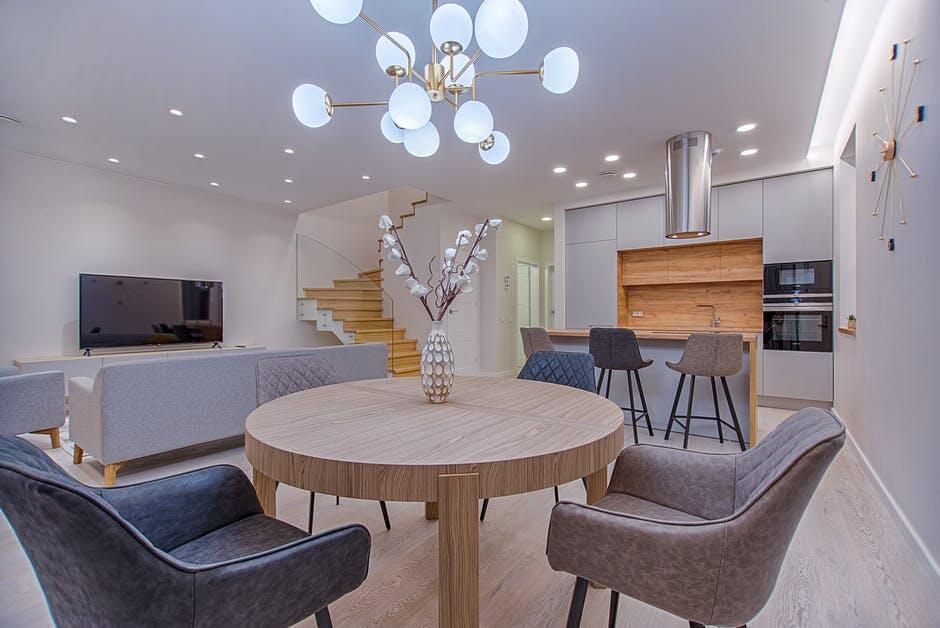Letting more natural light into your home can make it feel warm and welcoming. Sunlight doesn’t just look nice it can boost your mood, lower your energy bills, and help you feel more awake.
But some homes don’t get enough sunlight because of how they were built or how furniture is placed. If you want to make your home brighter and more cheerful, you’re in the right place.
Here are easy ways to bring more natural light into your space.
How to Maximize Natural Light in Modern Homes
Bright, airy spaces filled with natural light create a welcoming atmosphere in any home. However, many modern homes often lack sufficient daylight, leaving residents to rely on artificial lighting.
Fortunately, there are numerous techniques to enhance natural light in your home, improving both aesthetics and well-being. With just a few modifications, you can transform your living space into a vibrant sanctuary.
1. Choose the Right Color Palette
Color plays a significant role in how light interacts with your space. Light colors, such as whites and soft pastels, reflect sunlight and can amplify brightness throughout your home.
On the contrary, darker hues absorb light, making rooms appear smaller and less inviting. Painting your walls in lighter shades can nurture an expansive feel, while mirrors can enhance this effect by reflecting light.
2. Install Larger Windows
Increasing the size of your windows is a direct way to let more natural light flow into your home. Larger windows allow more sunlight to penetrate and can brighten even dimly lit rooms.
If structural changes are feasible, consider installing floor-to-ceiling windows or glass doors. Not only do they provide ample natural light, but they also create a seamless transition between indoor and outdoor spaces.
3. Utilize Skylights
Skylights are an excellent option for areas where wall space is limited. By installing skylights, you can introduce natural light without sacrificing wall space or privacy.
They are especially beneficial in rooms with low windows or in lower levels of multi-story homes. This innovative solution can bring warmth and illumination, transforming an otherwise dark area into a bright haven.
4. Opt for Open Floor Plans
Open floor plans are becoming more popular in modern architecture, primarily due to their capacity for maximizing natural light. By minimizing walls and barriers, light can easily flow throughout the space.
When designing or remodeling your home, consider merging adjacent rooms to create an open layout. Not only does this technique enhance natural light, but it also improves family engagement and a sense of spaciousness.
5. Select the Right Window Treatments
Window treatments can either obstruct or enhance natural light. To achieve optimal light levels, choose lightweight materials such as sheer curtains or blinds that can be adjusted for varying light conditions.
Avoid heavy drapery that blocks sunlight. Additionally, consider vertical blinds for large windows or sliding glass doors for more control over natural light.
6. Incorporate Reflective Surfaces
Maximize the effectiveness of natural light by utilizing reflective surfaces throughout your home. Mirrors, glass furniture, and glossy finishes can bounce light around your space, enhancing brightness.
Strategically placed mirrors can create an illusion of depth, making small rooms appear larger while providing additional light. Experimenting with reflective decor can lead to the perfect blend of aesthetics and functionality.
7. Create Outdoor Living Spaces
Outdoor living areas can enhance the natural light available to your home. By creating patios, decks, or balconies, you not only expand your living space but also open up your home to more light.
These areas allow sunlight to flow freely into your home while providing a beautiful view of the outdoors. Include pergolas or awnings that filter light rather than block it completely to maintain a connection with nature.
8. Use Transom Windows
Transom windows are installed above doors and regular windows, serving as a stylish way to introduce more light. These windows can enhance the natural light without compromising privacy, making them suitable for bathrooms or other enclosed rooms. When considering designs, opt for clear glass or translucent materials to maximize light entry while still affording privacy.
9. Reduce Unnecessary Obstructions
Examine your home’s layout for furniture or decor that might be obstructing light. Tall furniture, oversized plants, or bulky decor can create dark spots.
By reorganizing these elements, you can optimize the flow of natural light throughout your space. Ease of movement and a decluttered environment facilitate light penetration, uplifting the overall ambiance of your home.
10. Use Glass Walls and Doors
Glass walls and doors are a stunning way to incorporate natural light into your living spaces. They bridge the gap between indoor and outdoor areas, seamlessly merging both worlds.
Whether it’s sliding glass doors to an outdoor patio or glass walls in a modern kitchen, these features allow maximum light while maintaining a contemporary feel. Consider a professional for an aesthetic upgrade that enhances light exposure.
11. Maintain Clean Windows
Simple maintenance, such as regularly cleaning your windows, can increase the amount of natural light in your home. Dust, dirt, and smudges can accumulate, blocking sunlight from penetrating your living areas.
Schedule a routine cleaning, and consider using a window cleaning solution that maximizes transparency to ensure a crystal-clear view. Your efforts will pay off when your home becomes brighter and more inviting.
12. Invest in Smart Home Solutions
Smart home technology can optimize the use of natural light. Automated window shades can open and close based on the time of day or sunlight exposure, ensuring your home stays light and comfortable.
Additionally, smart lighting systems can adjust based on available natural light, creating an efficient and visually pleasing atmosphere. As technology advances, integrating these solutions into your home can enhance your living experience.
Factors to Consider When Choosing the Perfect Home

When looking for a new home or planning renovations, various factors will help ensure that natural light can be maximized effectively. Understanding these aspects will help potential homeowners make informed decisions based on light optimization.
1. Orientation of Your Home
The orientation of your home plays a crucial role in how much natural light enters. Homes that face south generally receive the most sunlight exposure throughout the day.
In contrast, north-facing homes might have less direct sunlight. Understanding your site’s orientation can help you position windows and other openings to maximize natural light.
2. Window Placement
Strategically placing windows can enhance the amount of natural light in your home. Consider placing larger windows on the southern and western sides to capture afternoon light. Additionally, think about using clerestory windows, skylights, or transom windows to introduce light into areas that may not be directly accessible.
3. Window Size
Larger windows do not always guarantee more natural light, but they can allow for more expansive views and open up interior spaces. When designing your home, balance larger window sizes with the overall design and functionality of each room. It’s essential to ensure that window size complements your home’s architectural style.
4. Glass Type
Different types of glass can affect the quality of light entering your home. For instance, low-E glass can reflect heat, making it energy-efficient while allowing natural light to pass through. Consider using smart glass or tinted glass if you require privacy without sacrificing natural light.
5. Interior Colors
One important factor to consider when choosing the perfect home is the interior colors. Colors play a powerful role in shaping how a space feels-warm tones like beige and soft yellows can create a cozy, inviting atmosphere, while cool tones such as blues and grays bring a sense of calm and modernity.
The right color palette can also affect lighting, room size perception, and even mood. When selecting a home, it’s essential to consider how the interior colors align with your personal style and emotional comfort. A well-chosen color scheme can turn a house into a true sanctuary.
6. Room Functionality
When designing spaces with natural light in mind, consider the room’s purpose. Living areas and kitchens can benefit from bright, open spaces, while bedrooms may require dimmer lighting for restfulness. Tailoring the amount of natural light for each room’s function optimizes comfort and usability.
7. Landscaping Considerations

The outdoor environment greatly impacts the home’s overall appeal, functionality, and value. Well-maintained landscaping enhances curb appeal, making the home more welcoming and attractive. It also influences how much outdoor space is usable for relaxation, gardening, or entertaining.
Trees, shrubs, and garden design can provide shade, privacy, and even reduce energy costs. Additionally, the type of landscaping may affect maintenance needs and costs over time. Considering the landscape layout, plant choices, and long-term upkeep is essential in selecting a home that suits both your lifestyle and aesthetic preferences.
8. Energy Efficiency
An energy-efficient home can reduce utility bills while also benefiting the environment. Features such as proper insulation, energy-efficient windows, LED lighting, and modern HVAC systems help maintain comfortable indoor temperatures with less energy use. Homes with solar panels or Energy Star-rated appliances offer additional savings and sustainability.
Energy efficiency also impacts long-term costs and resale value. By choosing a home designed to conserve energy, buyers invest in lower expenses, improved comfort, and a reduced carbon footprint-making it a smart and responsible choice for modern living.
9. Architectural Design
The design defines the home’s character, functionality, and how well it fits your lifestyle. Architectural styles range from traditional to modern, each offering unique aesthetics and layouts that impact daily living. A well-designed home ensures efficient use of space, natural light, and flow between rooms, contributing to comfort and convenience.
Additionally, the architectural design affects the home’s resale value and how it blends with the surrounding neighborhood. Features like rooflines, window shapes, and exterior materials all contribute to the overall appeal.
It’s important to choose a design that resonates with your personal taste while meeting practical needs. Considering architectural design helps you select a home that not only looks beautiful but also supports your everyday activities and long-term satisfaction. This makes it a crucial factor in finding your ideal home.
10. Window Treatments
Often overlooked, window treatments play a crucial role in both the functionality and aesthetic of a home. They help control natural light, enhance privacy, and contribute to energy efficiency by providing insulation against heat and cold. The type, style, and condition of window treatments such as blinds, curtains, or shades can greatly affect the ambiance and comfort of each room.
Additionally, well-designed window treatments can complement the home’s décor, adding a layer of sophistication or coziness depending on the desired look. Practical considerations like ease of cleaning, durability, and light-filtering capabilities also matter, especially in rooms like bedrooms or living areas.
In homes with large or numerous windows, window treatments can impact everything from mood to energy costs. When evaluating a potential home, it’s wise to consider how the existing or potential window treatments align with your lifestyle and design preferences.
11. Use of Mirrors
Mirrors do more than just reflect images-they can transform the feel and functionality of a space. Strategically placed mirrors can make rooms appear larger and brighter by reflecting natural and artificial light. This is especially valuable in smaller homes or rooms with limited windows.
Additionally, mirrors can enhance the home’s aesthetic appeal, adding a decorative touch that complements various interior styles. They also create a sense of depth and openness, making living spaces feel more inviting and comfortable.
When selecting a home, consider how mirrors are used or can be incorporated to maximize space and light. Whether built-in, framed, or decorative, mirrors can impact the ambiance and perceived size of a room. Ultimately, understanding the potential of mirrors can help you envision a more beautiful and functional living environment.
12. Professional Input
Finally, don’t underestimate the value of consulting professionals when considering how to integrate natural light into your home. Architects, designers, and contractors can provide invaluable insight into window placements, materials, and structures that optimize natural light.
Engaging professionals with experience in incorporating natural lighting into their projects can affect the results. For example, if you’re located in Southern California, searching for Window Replacement in Orange County can connect you with experts who understand this integral aspect of home design.
Explore Techniques to Enhance Natural Light in Your Home
Maximizing natural light in your home doesn’t just uplift your space aesthetically; it can also improve energy efficiency and overall well-being. By considering the outlined strategies and essential factors when planning modifications, you can create a radiant environment tailored to your lifestyle.
Don’t hesitate to explore your options. Take action today and transform your home into a bright oasis that uplifts your spirit!
Visit our website and read more.

